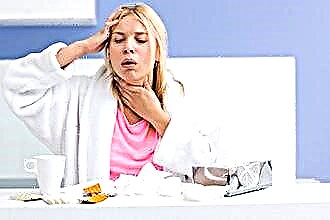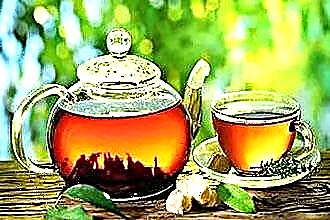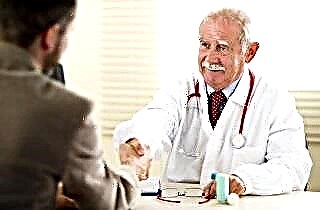Hypotension - a decrease in blood pressure (BP) below the tonometer mark 100/60 mm Hg. Art. for men and 95/60 mm Hg. for women. The clinical picture of the pathology is characterized by general weakness, headache, tremors, malaise, tachycardia (heart palpitations), anxiety, fainting and fear. The causes of hypotension are varied: from the individual norm of the body to severe organic lesions of the heart, kidneys, and the hematopoietic system. The critical systolic pressure is below 70 mm Hg. requires urgent medical attention.
When do you need to increase blood pressure and in what ways to do it?
Reduced blood pressure is one of the options for the individual characteristics of the body. Hypotensives account for more than 15% of the healthy population. Low indicators without subjective complaints and signs of violations do not require correction.
The effective pressure for normal kidney function is 70 mm Hg. Art., a more pronounced decrease in indicators leads to violations.
Most people when asked: "How to increase heart pressure?" will answer: "Caffeine", which belongs to the group of stimulants of the central nervous system. The substance blocks adenosine receptors in neurons, which leads to increased secretion of acetylcholine (AC), norepinephrine, dopamine, serotonin and psychostimulating acids.
Foods high in caffeine:
- dark chocolate (from cocoa beans);
- natural brewed coffee;
- green tea;
- "Coca Cola";
- cocoa.
Patients who experience headaches, discomfort behind the sternum, with attacks of hypotension, are advised to increase the indicators to "working" values (differ for each person). In practice, non-drug and pharmaceutical methods are used.
Ways to build up pressure:
- Contrasting foot baths. Use two basins of water (one at room temperature, the other cold). In each, hold the feet for 20-25 seconds, repeat 5-10 times.
- Contrast shower - a sharp change in water temperature (frequency and duration of the "approach" as with baths). It is recommended to complete the procedure with cold water.
- Physical activity according to human capabilities: gymnastics, running.
- Food products: strong green or black tea, natural coffee.
In addition, safe folk remedies for increasing pressure in situational (episodic hypotension) include:
- ginseng root;
- Eleutherococcus root;
- lemongrass fruit;
- rhodiola;
- lure;
- aralia;
- saparal;
- pantocrine;
- Rantarin.
These substances of natural origin tone the nervous system and increase blood pressure, help to adapt to the environment. They are used as adaptogens for general malaise, stress, anxiety, overexertion and illness. Used in the form of alcoholic extracts and tinctures.
These methods are recommended at the initial stage of therapy in order to protect the patient from the side effects of medications.
List of effective drugs
Medicines are prescribed to patients with prolonged persistence of hypotension, subjective and objective signs of disorders.
The list of means for increasing pressure and their main characteristics are presented in the table:
| Medicine | Mechanism of action | Contraindications for admission | Side effects |
|---|---|---|---|
| "Gutron": drops, tablets |
|
|
|
| "Pantokrin" (group of adaptogens) |
|
|
|
| Apilak (a derivative of royal jelly): tablets |
|
|
|
| "Citramon" ("Askofen"): tablets | Contains caffeine, acetylsalicylic acid and paracetamol
|
|
|
| "Cordiamin": solution for subcutaneous, intramuscular and intravenous administration |
Use if necessary to quickly raise indicators (within 15 minutes) |
Joint reception with "Aminazin", psychostimulants, narcotic analgesics, hypnotics, anticonvulsants is not recommended |
|
| "Prednisolone": tablets, solution for intravenous, intramuscular administration | Glucocorticosteroid drug
|
|
|
The listed drugs are categorically contraindicated to be taken simultaneously with antidepressants, alpha-adrenergic agonists because of the risk of hypertensive crisis, acute myocardial infarction or stroke.
The dosage regimen and duration of treatment is prescribed by the doctor, depending on the severity of symptoms and concomitant pathology.
In case of a critical decrease (the upper values are less than 70 mm Hg), when it is not possible to increase the heart pressure with pills, emergency qualified help is needed.
During emergency care for hypotension, drugs for parenteral (intravenous) administration are used:
- "Mezaton" ("Heptamil");
- Dopamine;
- "Epinephrine" ("Adrenaline").
The funds cause a pronounced vasospastic effect, increase the strength and heart rate, and the tone of the arterial wall. Use is limited to resuscitation measures due to the high risk of adverse reactions and the list of contraindications.
In addition, infusion therapy is urgently prescribed with the restoration of water balance (with loss of fluid after bleeding, profuse diarrhea or vomiting).
Conclusions
 There are many reasons for hypotension: genetic pathology, diseases of the cardiovascular, nervous or endocrine systems. The selection of effective drug therapy depends on the underlying mechanism of the disorder. The general recommendations on nutrition and lifestyle used (physical activity, a sufficient amount of vitamins and trace elements in food) are aimed at increasing vascular tone. Raising blood pressure with drugs is allowed only after consulting a doctor due to the risk of side effects.
There are many reasons for hypotension: genetic pathology, diseases of the cardiovascular, nervous or endocrine systems. The selection of effective drug therapy depends on the underlying mechanism of the disorder. The general recommendations on nutrition and lifestyle used (physical activity, a sufficient amount of vitamins and trace elements in food) are aimed at increasing vascular tone. Raising blood pressure with drugs is allowed only after consulting a doctor due to the risk of side effects.
The author of the article: Vera Aleksandrovna Fedyunina, cardiologist, GBUZ GKB 1, Orenburg



